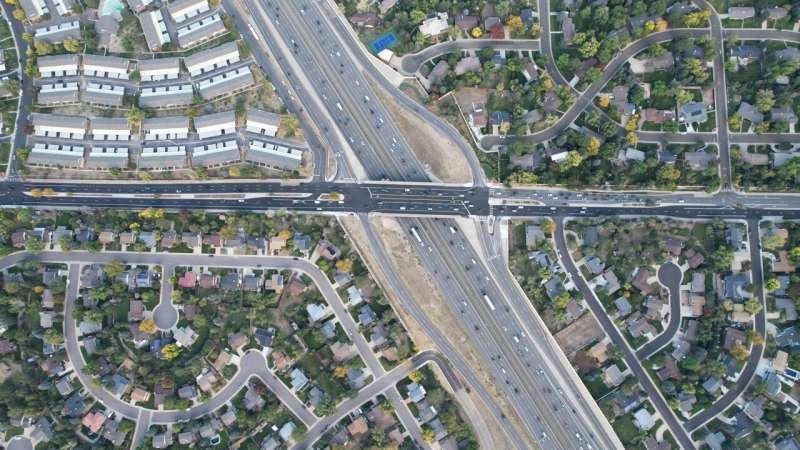This article has been reviewed according to Science X's editorial process and policies. Editors have highlighted the following attributes while ensuring the content's credibility:
fact-checked
peer-reviewed publication
trusted source
proofread
Highways through historically redlined areas likely cause air pollution disparities today

As part of the New Deal, several governmental programs were created to expand homeownership through mortgages and loans. However, neighborhoods with primarily Black or immigrant communities often were rated "hazardous" for repayment under the discriminatory, "redlining" practice that restricted lending.
Today, those same areas are exposed to more air pollution than other urban neighborhoods, and according to research published in Environmental Science & Technology, the cause could relate to nearby highways or industrial parks.
Between the 1930s and late 1960s, groups such as the Federal Housing Administration and the Home Owner's Loan Corporation (HOLC) worked to insure loans, but they were selective about which neighborhoods would receive that funding. Areas were rated from "A" (the least risky) to "D," which was considered riskiest and color-coded red.
These redlined neighborhoods were often home to Black or immigrant communities whose residents were routinely denied mortgages or loans as a result of the maps. In this same time period, many of these communities had interstate highways routed through them, either isolating them or demolishing them completely.
Recently, researchers showed that historically redlined areas have higher levels of air pollution than those that received higher ratings, and similar disparities affect many cities across the U.S. Denver is one such city, where Joost de Gouw and colleagues wanted to investigate the origin of the pollution differences.
The team gathered satellite and computer modeling data on nitrogen dioxide (NO2) and airborne fine particulate matter (PM2.5), both of which can be hazardous when inhaled. Combining demographic data from the 2020 census and historical maps drawn by the HOLC, the researchers found that neighborhoods rated with a "D" had 13% higher levels of NO2 than areas labeled "A."
Across Denver as a whole, neighborhoods where the majority of residents identified as non-Hispanic White and Asian or Asian American were exposed to less NO2 and PM2.5 than areas with groups primarily identifying as American Indian and Alaska Native, and Hispanic or Latino.
The researchers also investigated the possible sources of the NO2 and PM2.5 emissions affecting the previously redlined areas. They discovered that diesel-powered vehicles emitted about half of the nitrogen oxides from road vehicles, while additional pollutants such as benzene were emitted from other point sources, including nearby petrochemical refineries.
Many major highways and industrial areas in Denver, including Commerce City, are surrounded by diverse communities that typically contain fewer people identifying as non-Hispanic White, even though this group makes up a majority of the city's population. The researchers say that this work helps to identify areas that might be the most improved by remediation programs such as clean technology incentives.
More information: Air Pollution Inequality in the Denver Metroplex and its Relationship to Historical Redlining, Environmental Science & Technology (2024). DOI: 10.1021/acs.est.3c03230 pubs.acs.org/doi/abs/10.1021/acs.est.3c03230
Journal information: Environmental Science & Technology
Provided by American Chemical Society





















